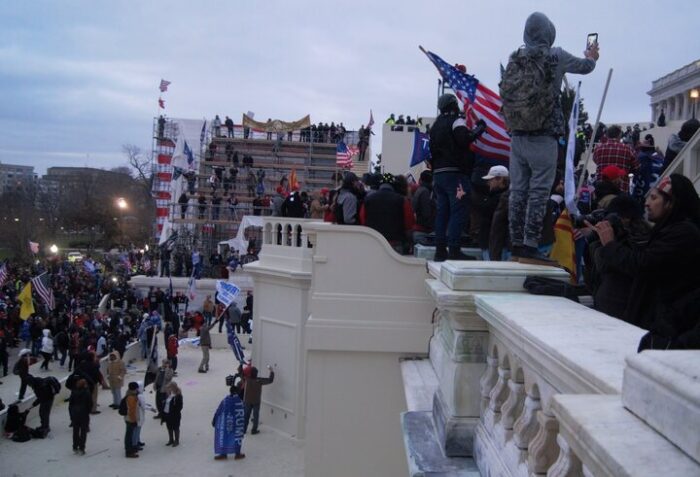
The study “Day of Rage: Forensic journalism and the US Capitol riot” by Kelly Gates from UC San Diego examined how elite press used forensic techniques to bolster journalistic authority using the case of the New York Times Visual Investigations team providing an account of the January 6 Capitol riot called Day of Rage.
Media organizations have struggled to respond to the rising anti-media populism that has been noted in many studies on the subject. One response has been the rise of media-forensic journalism, in which journalists seek to understand and present an event using data scraped from the social media, satellite images, and so on to reconstruct an event using highlighting, still shots, and so on.
The Capitol riot was a massively mediatized event, where an abundance of video material was available from the participants themselves, the security cameras, police body cameras, and from reporters. This overabundance of material provided challenges for the Visual Investigations team, who had terabytes of information to analyze and ultimately used over 500 individual pieces of content and analyzed many times more.
The history of forensic journalism extends back to the Zapruder film of the Kennedy assassination. The Rodney King beating was another landmark in the use of forensic techniques. The regular appearance of media forensics has occurred in tandem with structural changes in media systems and the increased use of surveillance and social media.
The New York Times Visual Investigations team was founded in April 2017, marking a transitional moment for the connection of media and forensics, as covered in a study by Sandra Ristovska (2021). Members of the team had backgrounds in verification of open source content, digital verification, and work in human rights advocacy.
The method for the study was informed by Eyal Weizman’s (2017) discussion of forensics as an aesthetic practice. The analysis of the forensic report is also informed Bruno Latour’s (2007) actor-network theory.
The full name of the documentary was Day of Rage: How Trump Supporters Took the US Capitol, and it was published in the New York Times website in June 30, 2021 and in YouTube the following day.
The documentary uses numerous sources to provide an account of how the riot unfolded, beginning with the bus ride by people reciting the pledge of allegiance and chanting “stop the steal”. Subsequently, two nationalist groups are tracked and the shooting of Ashli Babbitt is witnessed and the culpability of Donald Trump is emphasized.
Forensic techniques were used in making the film. The most obvious is the liberal use of highlighting to make specific individuals more visible or to draw attention to specific details. Freeze-framing is used to stop the action, provide narration, and to highlight details.
The Capitol building is the center in which the events unfold, supporting Weizman’s (2017: 52) point that buildings are “among the best sensors of societal and political change.” Architectural diagrams are used to provide scale and to make the experience more three dimensional.
The author points out that editing all the material together seamlessly was no small feat by the Visual Investigations team. The use of open source materials give the look and feel of an open-source investigation, while other materials for the film came from harder to access sources, like the Congress.
In conclusion, Day of Rage is emblematic in how forensic journalism is responding to the epistemic chaos of the mediatized and fragmented political sphere. The Visual Investigations team reimagining media coverage and scholars should do so too.
The article “Day of Rage: Forensic journalism and the US Capitol riot” by Kelly Gates is in Media, Culture & Society. (open access).
Picture: 2021 Storming of the United States Capitol 2021 by Wikimedia commons.